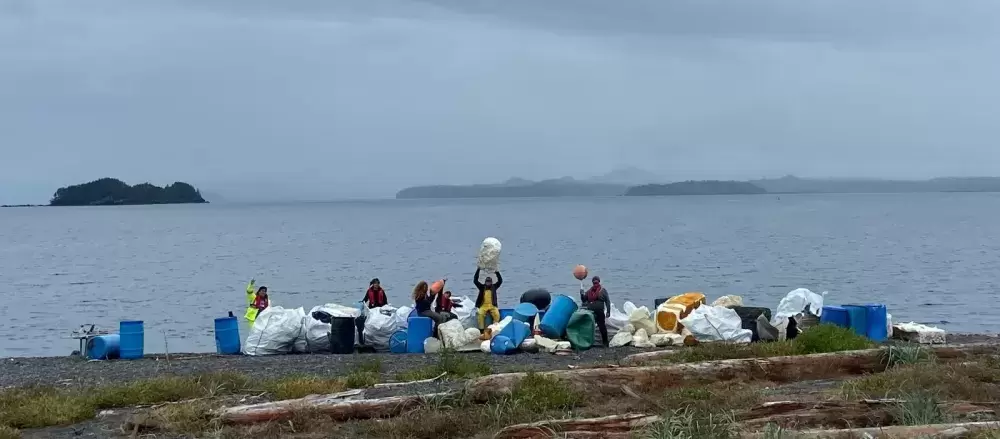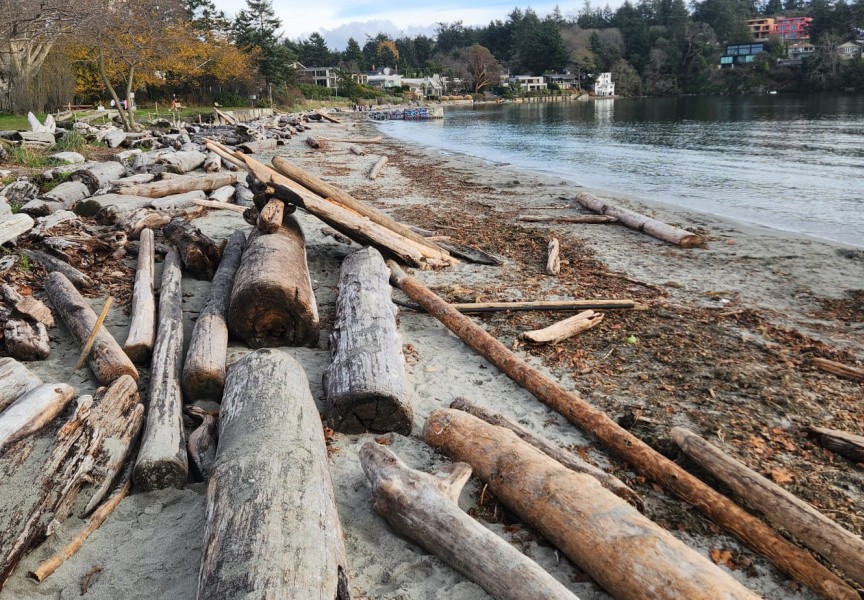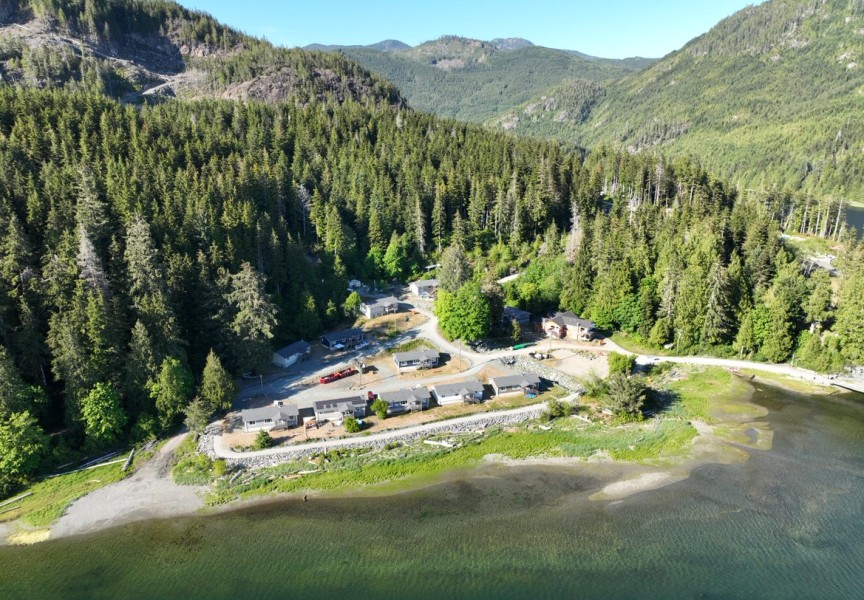The shoreline of a Nuu-chah-nulth First Nation is considerably cleaner these days.
That’s because a massive six-day debris cleanup was held on the shores of the Ehattesaht First Nation recently.
The garbage-collecting venture was part of a larger Clean Coast Clean Waters Initiative fund made possible through the B.C. government.
The entire project spanned about 280 kilometres of mostly remote coastline and is believed to be the province’s largest marine debris cleanup ever.
A total of $2.5 million was pledged to the program. Funding was administered through The Coastal Restoration Society and the program was dubbed the West Coast Vancouver Island Coastal Improvement Project.
This specific program is also part of a larger one in which the provincial government released $9.5 million in funding in 2021 to go towards shoreline debris cleanup and derelict vessel removal.
The cleanup on the shores of Ehattesaht First Nation began on Aug. 31 and continued until Sept. 5.
Shorebird Expeditions, a company based in Tahsis, was hired to lead the cleanup effort utilizing its 22-foot customized aluminum landing craft.
Besides shoreline cleanup efforts, Shorebird Expeditions is also a boat charter service catering to hiking and kayaking in the Nootka Sound area.
Sarah Steinbach (Killins), the owner of Shorebird Expeditions, said her company had been hired back in June to do a shore cleanup on Nuchatlaht Tribe territory.
The Ehattesaht cleanup was the second of two phases for Steinbach’s company.
“It’s an amazing amount of garbage we’re finding on the beaches,” Steinbach said of the Ehattesaht efforts.
The most surprising find?
“We found a tin boat that was completely mangled,” Steinbach said, adding she believed the boat would have originally been around 14 feet long. “It was in two pieces. And it looked like somebody took it and scrunched it into a ball.”
Besides fishing equipment, aquaculture barrels and plenty of plastic bottles, the cleanup crew also found substantial amounts of Styrofoam, that had presumably been dislodged from docks.
Steinbach said she believes the Styrofoam had been in the water for extended periods as weather and time had torn it apart into small pieces.
“The crew does all the work by hand,” Steinbach said. “And you have these massive Styrofoam logs in pieces. Quite often the crew is on their hands and knees filling up burlap sacks with it.”
Steinbach added cleaners would fill the boat two to three times per day with debris.
“You don’t really see it from the beach,” she said. “It is unbelievable how much debris there is.”
Steinbach said she believes some previous shore cleanups have been done in the area thanks to various volunteers.
“I don’t think it’s been done on this scale before,” she said. “A lot of this stuff has been here for a while.”
Besides the fact the shorelines are cleaner now, there’s also another positive. The majority of the debris will not end up in a landfill.
Steinbach said it will be transported via representatives from the Rugged Coast Research Society, a partner in the cleanup work, to Gold River.
“Over a dozen people will be sorting it out,” she said. “And over 80 per cent of this debris will be recycled.”
A total of 14 organizations and First Nations are taking part in the entire project. The goal was to create more than 300 job opportunities.
A total of eight individuals helped out with the Ehattesaht cleanup. Six members from the First Nation were among those hired to help out.
Kyle Harry, an Ehattesaht member who is hired to do odd jobs for his First Nation, worked as part of the cleanup crew for four days.
“It’s a good thing to get out there and clean (the shoreline),” he said. “That’s our front lawn.”
Like Steinbach, Harry was surprised to see just how much debris was on the shoreline.
“The bigger beaches had barely anything,” he said. “But the small beaches had quite a bit. The current goes into the smaller beaches.”
As for his most surprising find, Harry said he discovered a liquor bottle, almost a quarter full still, that contained 8 per cent alcohol. The only English word on the bottle was Japan. All other wording was in Japanese.
“I think it probably did float in from Japan,” Harry said.
Steinbach deemed the Ehattesaht cleanup a success.
“It definitely is something that brings the community together,” she said.
Steinbach was also pleased to see some youth from the First Nation were among those who were hired to take part in the cleanup.
“One of the most important things is getting kids involved,” she said. “This is a great opportunity for them. They’re going to be the stewards of this land. They need to learn how important it is to recycle.”








